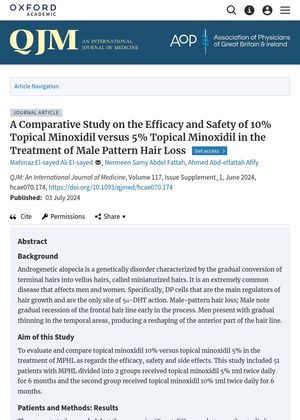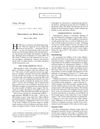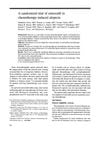A Comparative Study on the Efficacy and Safety of 10% Topical Minoxidil Versus 5% Topical Minoxidil in the Treatment of Male Pattern Hair Loss
June 2024
in “
QJM
”

TLDR 10% minoxidil improves frontal hair count more than 5% but has more side effects.
This study compared the efficacy and safety of 10% topical minoxidil versus 5% topical minoxidil in treating male pattern hair loss (MPHL) over 6 months with 51 patients. The results showed that the 10% minoxidil group had a significantly higher improvement in frontal total hair count compared to the 5% group. However, other parameters of hair growth were similar between the two groups. Despite the higher efficacy in frontal hair count, the 10% concentration was associated with more side effects, which could affect patient compliance and tolerance.





